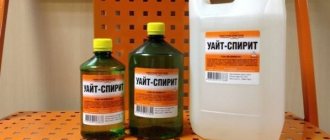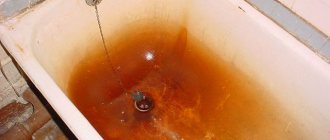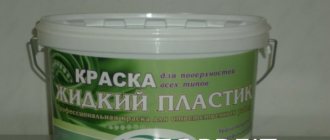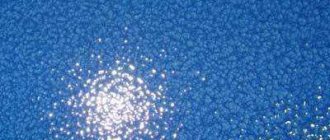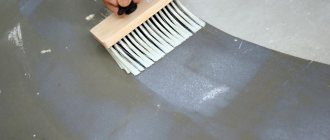Fans of soft carbonated drinks like Coca-Cola rarely study product labels. And in vain - there is information about the additive E338, the sweetened solutions of which taste like gooseberries. This is orthophosphoric acid, which has found application not only in food, but also in the chemical and aviation industries, medicine and agriculture.
It is also successfully used in mechanical engineering to protect against the most dangerous enemy, corrosion, because when treating metal surfaces with its solutions with the addition of zinc and manganese (so-called phosphating), an inert protective film is obtained. These qualities were also highly appreciated by home craftsmen who restore the paintwork on used cars with their own hands.
What is phosphoric acid
The substance belongs to the category of inorganic chemical compounds with the consistency of syrup. Its crystals quickly dissolve in ethyl alcohol and water.
The product is considered an antioxidant and is used as an acidity regulator. When used as an additive, it is designated with the code E338.
Description and chemical properties
Phosphoric acid has the formula H3PO4 with a molecular weight of 98 g/mol. Microparticles of the substance connect oxygen and hydrogen atoms. The concentration of components in the composition looks like this:
| Item name | Number of atoms | Mass percentage |
| Phosphorus | 1 | 65,3 |
| Hydrogen | 3 | 3,1 |
| Oxygen | 4 | 31,6 |
The orthophosphorus compound has a number of chemical properties. Among them:
- Rapid dissolution in water and ethanol.
- Formation of 3 rows of salts - phosphates.
- Causing burns when exposed to skin.
- Formation of explosive hydrogen when interacting with metal surfaces.
- Incompatible with hot surfaces, quicklime, alcohol-containing compounds, chlorates and pure metals.
- Melting at 42.35°C, but no decomposition.
Phosphoric acid is joined by oxygen and hydrogen atoms.
Physical and chemical properties
Orthophosphoric (or simply phosphoric) acid is an inorganic tribasic acid with the chemical formula H3PO4. It has medium strength and, under standard conditions, exists in the form of a colorless, odorless liquid or transparent crystals that actively absorb water vapor from the air, diffuse and require storage in tightly closed containers. In the molten state, it is prone to supercooling, thickens to an oily state at +15 °C, becomes glassy at a temperature of -121 °C, melts at +42.35 °C, boils at +158 °C, and when heated above +213 °C becomes into pyrophosphoric acid H4P2O7.
It dissolves in most solvents, the main ones being water and ethyl alcohol. Its 85% aqueous solution is colorless and odorless, similar in consistency to syrup, and is called phosphoric acid. It exhibits the properties of an acid or base depending on the conditions, reacting with bases, salts of weak acids, basic oxides and ammonia. It forms explosive hydrogen when interacting with metals that come before it in the activity series, and as a result of a qualitative reaction with silver nitrate, yellow insoluble crystals precipitate.
Phosphate salts occupy an important place in the biochemical processes of animals and plants and synthesize biologically active substances. Phosphorus esters of adenosine ATP, AMP and ADP are the main components of energy metabolism, and the phosphate group is an integral part of DNA and RNA molecules.
Acid production
Acid can be obtained in 3 ways:
- As a result of hydrolysis of phosphorus pentachloride.
- From phosphate.
- Using the reaction of phosphorus with water.
The latter method involves a violent reaction, so phosphorus oxide is pre-treated with an acid concentrate heated to 200 °C.
In laboratory conditions
The industrial technology for producing H3PO4 consists of the following steps:
- Oxidation of phosphorus during combustion to the anhydride state.
- Hydration and absorption of the finished compound.
- Acid accumulation
- Collecting vapors from the gas fraction.
The acid is obtained by hydrolysis of phosphorus pentachloride.
In addition, in laboratory conditions the component is generated by reacting toxic white phosphorus with dilute nitric acid.
This method has a number of limitations and requires compliance with special safety precautions.
At home
The extraction method of production, which can be implemented in everyday life, consists of using the sulfuric acid decomposition reaction of salts with a yield of up to 95%. The manufacturing technology consists of the following stages:
- A consistency based on natural phosphate (pulp) and sulfuric acid is fed from the reservoir into the extractor - a special steel vat with a stirrer.
- Four-hour treatment and heating to 90 °C leads to the appearance of phosphoric acid and crystallization of calcium sulfate.
- Natural phosphate is separated using a perforated belt with a special filter coating. Passing through the holes of this canvas, the finished product is sent to vacuum chambers.
Production process
In laboratory conditions it is obtained:
- Dissolving phosphorus (V) oxide in water when heated.
- Hydrolysis of phosphorus pentachloride in hot water.
- When concentrated nitric acid reacts with white phosphorus.
The industry uses thermal and extraction (sulfuric acid) methods. The thermal method, which allows to achieve the greatest purity of the product, includes the following stages:
- Oxidation of elemental phosphorus by combustion in excess air to produce tetraphosphorus decaoxide (phosphoric anhydride).
- Hydration and absorption of its vapors in special towers.
- Condensation of the resulting acid with the capture of mist from the gas phase.
The extraction method uses the reaction of sulfuric acid decomposition of natural salts with a yield of up to 95%. Process stages:
- A mixture of sulfuric acid and natural phosphate, the so-called. The pulp is fed from the hopper into the extractor - a steel lined vat with a stirrer.
- In 4 hours, the pulp heated to 90 °C successively passes through several such reactors. As a result, phosphoric acid is formed and calcium sulfate crystallizes.
- To separate, the pulp enters a perforated belt with a filter cloth, and through its holes the finished product is collected into a vacuum chamber.
Benefits of phosphoric acid
The use of a chemical compound for processing metal products is due to the effective dissolution of oxides and the formation of a durable protective film. The solution does not harm metal surfaces and converts traces of corrosion into iron phosphates.
Phosphoric acid converts traces of corrosion into iron phosphates.
Technical acid is actively used for washing heat exchangers, coils, heaters and products of the metal rolling industry, including the surfaces of pipes of water supply and heating systems, fittings, boilers, hydraulic structures and cast iron products. In addition, it is in demand for polishing surfaces.
The greatest demand is for zinc, which contains several additives - manganese, acid and zinc.
This mixture increases the protective properties of the film formed on the metal.
Safety precautions when working with acid
H3PO4 belongs to the class of hazardous compounds, so work requires strict adherence to a number of rules. Metal processing or other actions with acid are carried out in a special building with an organized supply and exhaust ventilation system, away from open flame sources.
To work with phosphoric acid, you need a respirator, gloves and goggles.
It is forbidden to start work without a respirator, gloves and goggles. You also need to provide a set of overalls and non-slip shoes.
If the substance comes into contact with the skin and eyes, or if vapors are inhaled, a person may experience a burn, a gag reflex, coughing and dizziness. To avoid complications, you must immediately remove contaminated clothing, rinse the affected area with running water, call a medical professional, apply a bandage and neutralize the spilled composition with an alkaline agent.
Storage rules
Orthophosphorus compounds are packaged with GOST 3885-73 markings. All requirements for storage and transportation are specified in the regulatory act.
The composition can be kept in steel tanks for the railway industry, tanks with a hermetically sealed lid, barrels, canisters, polyethylene and glass bottles, or in special rubber tankers. The packaged substance is allowed to be placed in covered hangars with heating. To preserve the physicochemical characteristics during melting, the crystallized form of H3PO4 is heated to 60°C. The shelf life, subject to all rules, is 3 years from the date of production.
Disposal of the compound is carried out in industrial conditions by neutralization with alkalis.
Shipping
There are a number of restrictions and requirements for transporting acid specified in GOST 3885-73. The composition can be transported on any transport using tightly closed containers.
Safety precautions
Phosphoric acid is an aggressive, fire- and explosion-proof liquid. When working, use special clothing and protect your respiratory system with respirators. Upon contact with skin it causes burns, inflammatory skin diseases, upon inhalation - coughing, upon contact with eyes - burning, in acute poisoning - dizziness, headaches, vomiting, diarrhea, difficulty breathing. Heated (over 80°C), sprayed or in the form of vapors, phosphoric acid strongly irritates the upper respiratory tract. All work with acid must be carried out in rooms equipped with forced-air ventilation. Workers must be provided with special clothing (cloth suit) and footwear (rubber boots), acid-resistant rubber mittens or gloves, and respiratory and eye protection.
Use of phosphoric acid in medicine
In the dental field, the composition is used to treat the internal coating of crowns. This improves the adhesion of the product during prosthetics. The substance is used in pharmacology as an active ingredient in various medications or dental cement.
Phosphoric acid is used in the dental field.
An orthophosphorus compound can etch tooth enamel, which is required when filling.
Impact on human health
H3PO4 affects the acid-base balance, increasing stomach acidity. Therefore, foods high in the additive are contraindicated for people with gastritis and other problems caused by high pH levels. Some experts argue that acid leaches calcium from the body, worsening the condition of tooth enamel and bone tissue. With excessive consumption, gastrointestinal disorders, vomiting and nausea appear. In case of poisoning, you should immediately seek help from a doctor.
Properties of phosphoric acid
The main property of orthophosphoric acid is its effect on the acid-base balance of the body, which leads to an increase in acidity.
Increased acidity increases the risk of developing many diseases, including tooth decay and early osteoporosis.
Another property of phosphoric acid (in high concentrations) is its ability to cause burns. The vapors of this acid can cause nosebleeds and atrophic processes in the nasal mucosa, and in some cases can lead to tooth decay and changes in the blood formula.
Application for metal
H3PO4 acid is widely used in metallurgy and in the processing of metal surfaces. With its help you can remove traces of corrosion and scale, transform rust or solder parts.
Rust removal
H3PO4 effectively eliminates corrosion from metal, including precious types (silver, brass, bronze), and also forms a thin protective layer that prevents the negative effects of external factors. After treatment with such a component, a cycle of corrosion and absorption of iron oxides begins on the surface, and then a gray oily film appears.
Phosphoric acid eliminates corrosion from metal.
Several technologies for removing oxides are used in industry and everyday life:
- Complete immersion of the part in acid.
- Surface washing using a brush, roller or spray.
- Treatment of the top surface, which is pre-cleaned mechanically.
To remove corrosion, the product is first degreased and washed. Next, an acid solution is prepared (100 g of 85% product is diluted in 1 liter of water), and the part is immersed in a tank with the composition for 1 hour. The contents should be stirred periodically.
After the treatment cycle is completed, the product must be removed and washed with a neutralizing agent. The following ingredients are used to prepare it:
- Water – 50%.
- Medical alcohol – 48%.
- Ammonia – 2%.
Rust converter
H3PO4 based rust converter forms a protective film on metal surfaces that prevents future corrosion processes. The connection is safe for the following sample types:
- Rolled metal products.
- Wells.
- Steam generators.
- Boilers and water heaters.
- Heating radiators.
- Heat exchangers.
- Serpentines.
- Heating and water supply units.
- Steam generators.
- Kotlov.
- Components of mechanisms and vehicles.
The rust converting agent is used for rolled metal products.
For soldering
Acid flux made from an orthophosphoric compound allows you to obtain high-quality soldering, provided that the remaining substance is immediately washed off with water. If you leave them to harden, a protective film will appear on the surface.
How to use an acid compound to remove rust
An acidic compound is suitable for removing corrosion from metal surfaces because the caustic liquid and rust react to form a protective film that will prevent the formation of new oxides on the metal. There are two most popular methods of using it:
- immersion method;
- surface application method.
Immersion method
It is used if there is a sufficient amount of solution, because the rusty part must be completely immersed in the substance. Pour 1 liter of water into the desired container and add 100–150 g of crystals. You will receive a solution with 85% concentration.
Immerse the part in the resulting liquid, leave it for an hour
After an hour of treatment, remove the part, rinse and treat it with a neutralizing mixture, which is prepared from 2% ammonia and 48% butyl alcohol, as well as 50% water. At the last stage, rinse the part again with water and dry it.
Important information! Do not skip any of the instructions, as this will disrupt the chemical process.
Surface application method
For large objects, the method of surface application of an acid compound is used. At the same time, the level of substance consumption is reduced. Apply the liquid only with a brush with natural bristles; also use a roller or sprayer.
If there are areas where the rust layer is thicker than average, remove some of the rust using a wire brush or grinder.
After two hours, treat the product with a neutralizing mixture to remove any remaining substance. After this, thoroughly rinse and dry the part.
Read in detail about removing rust from a cast iron frying pan.
Phosphoric acid in everyday life
Acid is actively used in household chemicals to remove rust from bathroom surfaces. It is suitable for the care of earthenware and enamel coatings. Before distributing the solution, the surface is treated with a detergent composition, which is prepared from 200 g of the active ingredient and 1 liter of water.
Acid is used to remove rust from bathroom surfaces.
In this case, the compound cannot be used for processing acrylic parts.
Rules for working with phosphoric acid at home
Phosphoric acid, like any other, is an aggressive compound. If used carelessly, it can cause quite severe long-healing skin burns, and its vapors cause dangerous damage to the respiratory tract. The substance often causes fires and explosions. Treatment of metal with orthophosphoric acid must be carried out very carefully. Therefore, you should work away from open flames.
Important! The room in which work with this substance is carried out must be well ventilated.
Use of phosphoric acid in the food industry
In the food industry, H3PO4 is designated E338. The substance is used in the production of various products and to maintain their presentation for a long time.
What kind of additive is E338?
Food additive E338 is a pleasant-tasting inorganic composition that is a powerful antioxidant and maintains the initial color of edible products. The component is also used to acidify drinks and foods.
Dangerous or not
The food component is officially approved, but has a negative effect on the body in excess concentration. Studies have shown that an excess of the substance in drinks or foods can lead to:
- To the development of diseases of the gastrointestinal tract.
- The appearance of complications of gastritis or peptic ulcers.
- Violation of acid-base balance.
- Leaching calcium from the body.
- Development of caries.
- The appearance of vomiting.
Additive E338 may lead to the development of gastrointestinal diseases.
If you have any symptoms of intoxication, you should seek medical help.
Where and why is it added?
E338 is in demand in the production of powders for baking bread, melting cheeses, preparing sugar, cola, sprite, sausages, etc. The main area of application is the production of carbonated drinks. In addition, the supplement can be found in:
- Butter products.
- Processed cheeses.
- Sausages.
- Bulok.
- Milk.
- Cakes.
- Baby food.
The additive can be found in processed cheeses.
Various applications of phosphoric acid
It is widely used in agriculture as well as the food industry due to its beneficial properties when added in moderation.
In agriculture, it is used to fertilize the soil, which helps plants survive drought and low temperatures.
The soil becomes more fertile and suitable for growing vegetables and small greens
In the food industry, this composition is used as a food additive and acidity regulator. It is actively added to carbonated drinks, sausages, cheeses, and so on. There is still debate about the dangers of adding this substance to food, but for now it is officially permitted.
The solution is also used in soldering to hold together parts made of steel or copper. Used to dissolve and solder the oxide film onto the surface of an object. The acidic compound softens this film, and then a new one forms in its place, which prevents the appearance of rust. Use this trick when building or constructing anything to get rid of possible corrosion problems.
This acidic compound has also found its application in electronics, namely batteries, since it is an electrolyte of medium strength. It inhibits the growth of harmful salt crystals inside the battery, extending its life.
Find out what is the best way to glue plastic parts together.
Other applications
In addition to medicine, metallurgical and food industries, orthophosphorus chemical compound is in demand in organic synthesis. With its help, phosphorus salts of calcium, manganese, aluminum and sodium are created. Among other areas of activity where the component is found:
- Oil industry.
- Film production.
- Making matches.
- Production of fire-fighting and fire-resistant products.
Acid is no less important for agriculture, due to the beneficial effects of phosphorus on the condition of plants and the intensity of their growth.
Phosphoric acid is used in the manufacture of matches.
The component is necessary for farm animals, because improves metabolic processes and promotes the appearance of natural growths.
Application of phosphoric acid in agriculture
H3PO4 is an essential substance for agriculture. For this sphere, it is mined from special ore.
The importance of phosphorus for plants
Phosphorus is intended to maintain metabolism in plants and is an integral component of RNA and DNA. It is necessary for photosynthesis, regulation of respiration of green spaces and acceleration of seed germination. Without this chemical element, the normal formation of the root system, seeds and buds is impossible. Therefore, timely application of phosphorus to the soil is the key to the successful development of plants.
Phosphorus is necessary for photosynthesis.
If there is a deficiency of the element, the color of the leaves may change from dark green to crimson, they will begin to fall off and become covered in spots.
In addition, the plant will not be able to grow to its usual height, and root development will be suspended.
The use of phosphoric acid for fertilizing
For agricultural activities, acid is used, which is extracted from ore. Once in the soil, it helps plants cope with frost or drought. In addition, the chemical compound increases the fertility of the land, making it a favorable environment for the growth of various crops.
Vegetables
Phosphoric acid promotes the setting of fruits and flowers, therefore it is necessary for processing various vegetable crops. It is used when caring for cucumbers and tomatoes. The use of the substance in drip irrigation allows you to reduce the cost of purchasing fertilizer and cleaning irrigation systems.
Phosphoric acid is used in caring for cucumbers.
For trees and shrubs
When feeding shrubs and trees, H3PO4 can improve their appearance and stimulate fruiting. Fertilizing is carried out both in spring and autumn, using different proportions of components. The standard calculation for autumn work involves diluting 1 tsp. acids, 2 tsp. potash fertilizers in 10 liters of water.
For soil
Preparations based on H3PO4 have a beneficial effect on the condition of the soil, promoting its structuring, the proliferation of beneficial bacteria and the decomposition of important substances. In addition, the additive increases the acidity of the substrate, saturating it with mobile compounds of iron, manganese and aluminum.
Such components bind applied fertilizers, including non-granulated superphosphate.
Using phosphoric acid to remove rust
Often, in everyday life or in industry, various types of acids are used that do an excellent job of removing rust. Many of them act as inhibitors. They prevent rust from occurring in the future. One of the most accessible acids is phosphoric acid. This type of acid is one of the cheapest.
Orthophosphoric acid is an inorganic compound that belongs to the category of fairly weak acids. However, despite its mild acidic qualities, it copes well with rust. It is not uncommonly found in food products. On manufacturers' labels it is indicated as substance E338. From a physical point of view, this type of acid is quite large crystals of an almost colorless shade. If it is heated to a temperature above 42 degrees, you will notice that it turns into a sticky mass. It then becomes a colorless liquid.
A large number of different products are produced based on orthophosphoric acid that can be used to combat corrosion. It is part of numerous types of converters that work efficiently. It helps corrosion stop spreading. When using phosphoric acid or products made from it, certain precautions must be observed. First you need to choose the right clothes. It should be made of dense material and completely cover the entire body. It is also necessary to equip yourself with gloves and a respiratory mask. If liquid gets on exposed areas, wash them with copious amounts of water.
Working with orthophosphoric acid is very simple. It effectively copes with rusty deposits and acts as an inhibitor. In order for it to work, you need to apply it to the rusty surface and wait a while until a black coating appears on the surface of the rusty product under the interaction of the acid. On average, this takes approximately six hours. After this, it is necessary to scrape off such plaque using a spatula.
It should be noted that many sweet carbonated drinks contain phosphoric acid. In everyday life, they can also be used to combat rusty deposits if necessary.
Types of phosphate fertilizers and their use
It is recommended to use all phosphorus preparations when digging the bed in the autumn, and not for surface distribution. This is due to the fact that the main active component (phosphorus) is in a form that is difficult to digest, and during the winter it completely decomposes, enriching all parts of the plants.
Superphosphate
For many vegetable growers and gardeners, superphosphate is the best feeding option. It contains monocalcium phosphate, phosphoric acid, magnesium and sulfur. Simple (15-20%) and double (50%) superphosphate are available for sale. Both varieties are used for open soil of all types and greenhouses, for all plants.
Superphosphate is the best feeding option.
The main areas of application are the processing of cucumbers, grapevines, strawberries, tomatoes and flowers.
When planting vegetables, 15-20 g of fertilizer is added to each hole, and when planting trees or shrubs - 35-70 g. At the growing season, fertilizers are distributed in liquid form: 100 g of simple superphosphate is diluted in 10 liters of hot water, and then applied into the soil around the perimeter of the trunk circle in a volume of 0.5 liters for each bush.
If double superphosphate is used, the dosage is reduced by 2 times due to the increased concentration of phosphorus.
Ammophos
Top dressing is obtained as a result of neutralization of acid with the participation of ammonia. This provokes the appearance of ammonium phosphate and nitrogen - an indispensable component for plant development.
Decorative plantings are fed at the rate of 15-25 g of fertilizer per 1 square meter. m. Fruit crops and berry bushes - 20-35 g per 1 sq. m. m.
Diammofos
The fertilizer can be found on sale under the names ammonium hydrogen phosphate and diammonium phosphate. It contains 50% phosphorus and 18-20% nitrogen. Top dressing is intended to reduce soil acidity and can be used in combination with manure or bird droppings. In most cases, the composition is distributed over the bed when planting vegetable crops.
Diammophos is a groundbait that is used on marginal lands.
So, if potatoes are planted, add 1 tsp into each hole. granulated diammophos. When planting cucumbers and tomatoes in seedlings, add 1 tsp to the soil. fertilizers
Potassium metaphosphate
The drug is sold in the form of a white powder. It contains 55-60% phosphorus oxide and 35-40% potassium oxide.
The fertilizer is quickly absorbed in acidic soil and has a beneficial effect on crops that are susceptible to chlorine.
Phosphorite flour
This mineral complex consists of 20% phosphorus and 30% calcium. In addition, it contains a complex of microelements. Phosphorite flour is used when digging up the soil before planting garden crops, based on the calculation of 1.5-2 kg of substance per 10 square meters. m. The substance is added to the pit for preparing compost.
Phosphorite flour is a mineral phosphorus fertilizer.
Bone flour
The product is made from processed cattle bones. It contains 15-35% phosphorus, calcium and biologically active additives, including zinc, cobalt, iodine, manganese, iron, etc. Bone meal is used to process flowers and vegetables.
The substance is insoluble in water and is characterized by slow absorption by plants. This process takes from 5 to 8 months. Bone meal is suitable for treating acidic soils before planting in a dosage of 2-3 tbsp. l. per hole for vegetables or 60-100 g per 1 sq. m when planting shrubs. For fruit trees, a dosage of 200 g per 1 square meter is used. m.
Nitroammofoska
Nitroammofoska is a complex phosphorus fertilizer that contains not only phosphorus, but also a number of other important fertilizers necessary for the growth and development of plants.
Nitroammofoska – phosphorus fertilizer.
The fertilizer contains nitrogen and potassium, which are quickly absorbed by vegetables, trees and shrubs.
Precipitate
This agrochemical consists of 30% phosphorus, and is therefore intended to reduce soil acidity. With its help, the fertile layer is enriched and already growing crops are fed.
Plants react positively to the treatment, provided that all rules of use have been followed.
Orthophosphoric acid. Properties and uses of phosphoric acid
Robert Boyle lived in the 17th century. At the same time, orthophosphoric acid . Are these facts related? Yes. It was Boyle who discovered the new compound.
An Irish chemist studied phosphorus by burning it and dissolving the remaining powder in water. So a new acid came out.
It is often called simply phosphorus. However, it is a generic name for several connections. Thus, HPO3 is metaphosphoric acid.
There is also pyrophosphoric with the formula H4P2O7. What is the chemical notation of orthophosphoric acid, we will understand in the first chapter of the article. As you understand, we are dedicating it specifically to the orthophosphorus compound.
Properties of phosphoric acid
Formula of orthophosphoric acid : - H3PO4. The prefix “ortho” indicates that the acid is oxygenic and that it contains the largest number of hydroxyl groups.
The least amount of them is in meta-compounds. The average number is in para-acids. Phosphoric has both meta- and para-isomers.
Note that all three prefixes are also used in the names of organic acids, to which orthophosphoric acid does not apply.
In organic chemistry, meta is a characteristic for substituents on a structural ring that are separated by one atom.
In para compounds the substituents are as far apart as possible, while in ortho they are neighbors. But, this is information, so to speak, for reference. Let's return to the discussion of the heroine of the article.
Externally, orthophosphoric acid is orthorhombic crystals. They are colorless and melt at 42 degrees Celsius.
However, due to the good solubility of the substance in water, chemists often deal with acid hemihydrate. Its formula: - H3PO4*0.5 H2O.
If the hemihydrate is crystallized, hexagonal prisms will be obtained. You can see them by taking a solution of orthophosphoric acid and cooling it.
A precipitate will form. This is a hemihydrate. Its melting point is 13 degrees lower than that of pure acid.
Acid mixes with water in any ratio. The reason lies in the system of connections with the liquid.
The molecules of the heroine of the article willingly join with her, while disconnecting from each other.
That is, in water, the compound breaks up into a mass of individual fragments that create hydrogen bonds with the structural elements of the liquid.
If we consider the structure of pure orthophosphoric acid , then it is a macromolecule. The individual molecules in it are connected to each other.
Hydrogen bonds are strong and reliable. This affects the physical properties.
The monolith conducts electricity poorly and is almost incapable of diffusion, that is, penetration into other substances.
If pure orthophosphoric acid melts, the liquid becomes viscous and oily - the molecules of the compound do not want to let go of each other.
In solution, the heroine of the article can be an electrolyte of medium strength. The internal structure of the molecules of the orthophosphorus compound does not allow one to reach the highest level.
The lengths of bonds between atoms in it are atypical. According to the formula, a double junction is formed between phosphorus and oxygen.
But, calculating the bond length, we get 1.74, that is, a number that is not a multiple of two. The length of the single bond between oxygen and hydrogen, on the contrary, is longer than expected - 1.3 instead of 1.
It turns out that the electron density of the P=O bond is partially distributed over other bonds.
The absence of a sharp difference in bond lengths leads to a non-standard structure of molecules. Their shape is close to tetrahedrons, that is, pyramidal.
Due to this structure, the reaction of orthophosphoric acid with most substances is impossible and proceeds slowly.
In chemical terms, the heroine of the article is passive, no match for sulfuric and hydrochloric acids, with a sharp difference in the lengths of intramolecular bonds.
Of the possible chemical reactions, the determining one for an orthophosphorus compound is interaction with silver nitrate.
A yellow precipitate forms. In other phosphoric acids it is white, so we can easily move the meta- and para-compounds aside and begin to study the process of producing orthophosphoric acid.
Phosphoric acid production
The heroine of the article is obtained from phosphates. These are esters and salts of phosphoric acids. Sometimes potassium orthophosphate with the formula K3PO4 is used.
But, more often, condensed phosphates are used. They have more than one phosphorus atom.
Phosphates, in turn, are extracted from phosphorites. This is a natural raw material, or more precisely, a group of minerals.
The most common ones are used. There are two of them. One is apatite, and the second is phosphorite, after which the group of stones is named.
We will analyze an example of obtaining the heroine of the article using a combination of calcium phosphate and hydrogen sulfate. The reaction is written as follows: - Ca3(PO4)2 + 3H2SO4 à 3CaSO4 + 2H3PO4.
In addition to phosphates, phosphorus pentochloride is also used. It is also called phosphoric acid chloride.
To obtain the latter, hydrolysis is sufficient, that is, interaction with water. The reaction is: - PCL5 + 4H2O à H3PO4 + 5HCl.
Phosphorus oxide is also forced to interact with water. It is produced by burning element 15 in the presence of oxygen.
The interaction of the oxide with water produces two molecules of ortho-acid, which means that this reaction is the most favorable and has no by-products. Let us be convinced by looking at the chemical record of the process: - P2O5 + 3H2O à 2H3PO4.
Note that phosphorus oxide reacts violently with water. In order to slightly “pacify” the release of heat and seething, the feedstock is treated with a concentrated solution of the already obtained acid. The concentrate must be heated to 200 degrees Celsius.
Application of phosphoric acid
Removing phosphoric acid from a person's life can cause collapse. The compound is used in at least seven industries.
In the food industry, the acid is called E338. Treatment of products with orthophosphoric acid fixes their color and does not allow it to be changed. This is largely due to the fact that the additive stops oxidation processes.
E338 is an antioxidant, unlike many foods, and is useful, just like phosphorus itself. In the body it is included in phosphatases.
These are enzymes without which cells cannot function normally. Normal taste without E338 is also not always obtained.
The additive gives dishes a pleasant sourness or spiciness. The specific taste depends on the amount of acid in the product and its concentration.
Now, let's remember spicy and sour dishes. In first place, perhaps, is soda. There are horror stories on the Internet about a nail that can corrode Coca-Cola if it sits in it for a week.
The horror story is not science fiction. However, gastric juice can do the same thing, and faster.
The acidity of the same Coca-Cola is 2.8, and the norm for the extract in the stomach is 1.3. The lower the number, the more corrosive the juice.
Phosphoric acid reacts with metals, like most acids.
That is why, over a long period of time, the compound can dissolve a nail and that is why it is used in cleaning mixtures.
This refers to products for removing rust and polishing metal surfaces.
Phosphoric acid for rust is most often used in everyday life, when restoring objects.
At the same time, the reagent is also used in large-scale production. Metallurgists make fluxes based on orthophosphorus compounds.
They facilitate the separation of gangue from the ore and reduce the melting point. Accordingly, fluxes are needed when soldering.
Orthophosphoric acid also available in the pharmacy . The substance is part of remedies for urolithiasis.
In addition, the heroine of the article is used by dentists. They need the reagent to etch the enamel before filling, as well as to treat the inside of the crowns.
The acid partially dissolves the metal base of the dentures. Pores appear in it, into which the fastening cement enters. As a result, the connection between the crown and the tooth is as strong as possible.
Orthophosphoric acid is part of freons, and they, as you know, are the basis of freezing units.
The heroine of the article is also the basis for many cosmetic products. In them, the acid stabilizes the chemical bonds between the constituent elements.
The compound performs a similar function in household detergents.
Let's add orthophosphoric acid to the list in hydraulic fluids for aircraft, in fertilizers, even in molecular research by biologists.
The latter use a reagent to clarify tissue sections examined under a microscope.
Don’t forget that phosphorus glows in the dark, which means phosphoric acid can brighten up gray everyday life. How much will you have to pay for this? The answer is in the final chapter.
Phosphoric acid price
Orthophosphoric acid is usually offered in solutions. The main concentration is 85%. Pour into canisters of 25, 30, 32, 40 liters.
The price tag is per kilo. On average, it is 80-110 rubles. The maximum price tag reaches 150 rubles per liter. The minimum request from sellers is 43 rubles.
It is worth considering that the cost depends on GOST a. Orthophosphoric acid 6552-80 pure, suitable for the food industry, reagents, and cosmetics industry.
But, there is also technical fluid. It is yellowish, which indicates the presence of contamination. GOST technical acid – 10678-76.
In retail, phosphoric acid is sold in small tubes. So, 50 milliliters for soldering costs about 100 rubles.
The rest of the products contain many additional elements. In agricultural fertilizers, for example, in addition to orthophosphoric acid, there is a complex of other minerals.
Therefore, the price tag depends on their quantity and nature. The markups of promoted manufacturers come into play.
Therefore, the objective cost of an orthophosphorus compound is judged only by advertisements for wholesale purchases of a concentrated solution of the reagent.
Phosphorus-potassium fertilizers: advantages and rules of use
Phosphorus group fertilizers are applied deep into the soil, closer to the root system.
Potash fertilizers are suitable for any type of substrate. They are also introduced deeply, because... take a long time to be absorbed by plants. After such treatment, crops quickly receive carbon dioxide and become resistant to sudden temperature changes, pests and diseases.
Potassium group
The potassium group includes the following compounds:
- Potassium chloride (KCl). Berry bushes with increased susceptibility to chlorine (blueberries and strawberries) are subject to early treatment with the composition. It is recommended to apply fertilizing during routine digging of the soil.
- Potassium salt. It is a mixture of KCl with sylvinite. Capable of neutralizing high acidity of the soil.
- Potassium sulfate. Intended for processing berry and fruit crops. It contains no harmful additives. Together with other fertilizers, the substance is distributed throughout the garden bed in spring and autumn.
Phosphorus-potassium fertilizers are applied to the soil.
Phosphorus group
The category of phosphate fertilizers includes the following types:
- Superphosphate. Sold in powder or granule form in pale gray or black. Before use, the product is diluted with water, because it takes a long time to dissolve in the soil.
- Double superphosphate. It has identical chemical and physical properties as the previous version, but is available in a 2-fold dosage. To fertilize carbonate and chernozem substrates, it is applied together with other organic matter. The optimal consumption of double superphosphate is 200 g per 10 kg of organic matter.
Nitrogen-phosphorus fertilizers and their application
Nitrogen-phosphorus fertilizers are widely used in agriculture. They are necessary to stimulate plant growth, increase resistance to adverse factors, including frost, and also to saturate root crops with polysaccharides.
Urea urea
The composition is obtained by the synthesis of gaseous ammonia and carbon dioxide. It contains a high concentration of nitrogen. When applying fertilizer, you need to take into account the intensity of soil heating. The higher it is, the better the substance will be absorbed by plants.
Urea urea is obtained from the synthesis of ammonia and carbon dioxide.
Ammonium nitrate
Ammonium nitrate is enriched with easily digestible nitrogen, which is suitable for treating frozen soil when growing winter crops. The dosage depends on the purpose of the feeding:
- When digging the soil, 50 g of the substance are consumed per 1 square meter. m. area.
- When planting in a hole, the dosage is reduced to 20-30 g.
Ammonium sulfate
The nitrogen-containing preparation is in demand among summer residents and large agricultural producers. It does not harm plants, but belongs to class 3 danger to humans. Therefore, when distributing fertilizer, you need to use personal protective equipment.
Ammonium sulfate is in demand among summer residents.
Optimal dosage per 1 sq. m. is 40 g of feeding.
Complex fertilizers and rules for their use
Flowering plants and vegetable crops require not only potassium, phosphorus and nitrogen, but also a number of important microelements. To apply them, ready-made complex formulations are used.
Calcium nitrate
It is a complex preparation that can be used both in a solid state when digging up the soil, and when diluted with water for foliar treatment and application under the root.
Calcium nitrate is a complex drug.
External spraying is practiced when caring for cucumbers. The solution is prepared from 2 g of powder diluted in 1 liter of water.
Copper sulfate
The substance is effective in preventing the appearance of pests or diseases. But when it penetrates into the soil, it binds phosphorus compounds, causing a deficiency of the chemical element. To avoid such consequences, you must follow the instructions for use.
Calculation of the amount and rate of application of orthophosphoric acid
H3PO4 acid is used to treat various crops. If a concentrated solution is selected, the dosage should not exceed 1 tbsp. l. for 10 l. If diluted, you need to use the appropriate proportions based on the composition.
For feeding trees and shrubs
For autumn treatment of trees and shrubs, a mixture of the following ingredients is used:
- 1 tsp. orthophosphorus compound;
- 2 tbsp. l. potash fertilizers;
- 10 liters of liquid.
Phosphoric acid is used to feed trees.
In spring, the proportions for berry bushes, such as blueberries, are slightly changed, using 1 tsp. acids, 2 tbsp. l. urea and 10 liters of liquid. The aqueous solution is suitable for treating wet soil and then adding water to the holes.
For feeding vegetables
Vegetables are fertilized using the following method: dilute 1 tsp in 10 liters of water. H3PO4, 1 tbsp. l. urea, 1 tbsp. l. potash fertilizer, 1 tsp. copper sulfate and 1 tsp. boric acid. A manganese solution is added to the composition to saturate the plants with manganese. Fertilizing is used 3 times per season with a frequency of 1 time in 10 days.
For cleaning a drip irrigation system
To disinfect drip irrigation systems, a low concentration of orthophosphorus compound is used (up to 0.6%). When cleaning, all safety requirements must be taken into account. Acid is added strictly to water, and not vice versa.
Review of effective phosphorus-containing fertilizers
There are many phosphorus-containing complexes available in the fertilizer market. But the following compositions are especially effective:
- Potassium monophosphate. Concentrated fertilizer that easily dissolves in water and consists of ¼ phosphorus. Due to the lack of nitrogen in the composition, it is suitable for treating any plants.
- Nitroammophoska. Complex mineral fertilizer with high efficiency. It can be used for any crops. The most positive results were observed when processing gray soils and chernozems.
- Sodium phosphate. Feeding with a high concentration of phosphorus (about 26%), which saturates plant roots with nutritional components and has a beneficial effect on crop yields.
What it is
In short, phosphoric acid is colorless crystals that absorb water very well (this is called hygroscopicity) and melt at a temperature of only 42 degrees.
It dissolves very well in water, forming a familiar acid solution, which is used for various purposes. By the way, from a chemical point of view, this acid is weak; its strength cannot be compared with such “monsters” as sulfuric or nitric acids. Which, however, does not mean that you can neglect safety rules when working with it.




